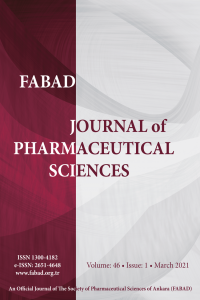A Cosmetic Nanoemulsion Against Seborrheic Dermatitis: Development, Characterization and Effectiveness
A Cosmetic Nanoemulsion Against Seborrheic Dermatitis: Development, Characterization and Effectiveness
Seborrheic dermatitis, nanoemulsion, herbal cosmetic, efficacy tests essential oils, plant extracts, vegetable oils, honey,
___
- Abismaıl, B., Canselier, J. P., Wilhelm, A. M., Delmas, H., & Gourdon, C. (1999). Emulsification by ultrasound:drop size distribution and stability. Ultrasonics Sonochemistry, 6(1-2), 75-83.
- ISSN: 1300-4182
- Yayın Aralığı: Yılda 3 Sayı
- Başlangıç: 2005
- Yayıncı: FABAD Ankara Eczacılık Bilimleri Derneği
Ravika NANDA, Mehak MEHAK, R.s. NARANG, Jasjeet Kaur NARANG
Feda DALO, Fatma Gülgün YENER, Ebru ALTUNTAŞ, Sibel DÖŞLER
Elham KESHAVARZI, Azadeh AMINZADEH
Zafer ŞAHİN, Büşra Işıl TOK, Erol AKGÜN, Erol AKGÜN, Ayşegül ÇAŞKURLU, Leyla YURTTAŞ, Barkın BERK, Şeref DEMİRAYAK
Digital Data Security Awareness: A Study with Pharmacy Students
Hesty SETİAWATİ, Yulia Yusrini DJABİR, Hardi HARDİ, Subehan LALLO, Muhammad Husni CANGARA
Safvan Ali CHEMBAN, Lakhvir KAUR, Gurjeet SINGH, Ravi Kumar DHAWAN, Anureet KAUR, Lovepreet SINGH
Fabrication and Evaluation of Cationic Charged Magnetic Nanoparticles for Enhanced Gene Delivery
